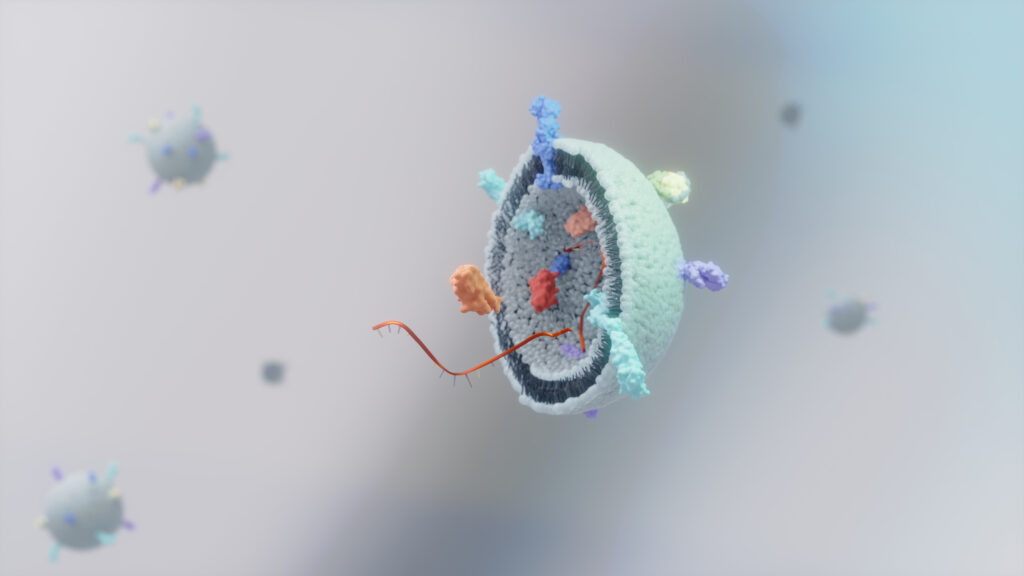In the medical field, wound healing poses significant challenges due to its complexity and time-consuming nature. Recent advancements in the utilization of cell-free wound repair strategies, particularly through the use of exosomes (EXOs), have shown promise in addressing these challenges. Exosomes are nano-sized lipid bilayer vesicles that can be extracted from various biological fluids, including urine, saliva, umbilical cord, blood, mesenchymal stem cells, and breast milk cells. Their unique properties, including low toxicity, minimal immunogenicity, and excellent biocompatibility, make them an attractive option for enhancing wound healing processes.
Exosomes are rich in bioactive molecules such as proteins, lipids, microRNAs (miRNAs), and messenger RNAs (mRNAs). These compounds play crucial roles in cellular communication and have been demonstrated to possess anti-inflammatory properties, which can significantly speed up the wound healing process. In addition to their natural healing properties, exosomes can also be loaded with various medicinal agents, further enhancing their therapeutic potential.
The review conducted by Ali Esmaeili, Ghasem Noorkhajavi, Masoud Soleimani, Hana Farsinezhad, Saeid Bagheri-Mohammadi, and Saeed Heidari Keshel provides an insightful overview of the latest research surrounding the application of exosomes in the regeneration of skin wounds. The authors evaluate recent pre-clinical and clinical studies that highlight the effectiveness of exosome-based therapies in wound healing.
Their findings suggest that exosomes can modulate inflammatory responses, promote cellular proliferation, and facilitate tissue regeneration, making them a promising therapeutic avenue in the management of difficult-to-heal wounds. The ability to harness the natural properties of exosomes for medical applications not only represents a significant leap in wound care but also aligns with the growing trend of regenerative medicine.
As the research continues to evolve, the potential for exosomes to revolutionize wound healing practices becomes increasingly evident. Their versatility and effectiveness could lead to new, less invasive treatment options that enhance patient outcomes and reduce recovery times. The work of Esmaeili and his colleagues is a crucial step in unveiling the full potential of exosomes as a critical component in the future of wound healing therapies.


